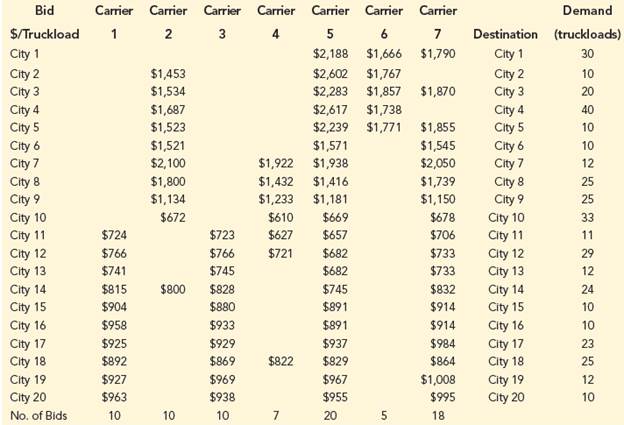Offhaus Manufacturing produces office supplies but outsources the delivery of its products to third-party carriers. Offhaus ships to 20 cities from its Dayton, Ohio, manufacturing facility and has asked a variety of carriers to bid on its business. Seven carriers have responded with bids. The resulting bids (in dollars per truckload) are shown in the table. For example, the table shows that carrier 1 bid on the business to cities 11 to 20. The right side of the table provides the number of truckloads scheduled for each destination in the next quarter.

Because dealing with too many carriers can be cumbersome, Offhaus would like to limit the number of carriers it uses to three. Also, for customer relationship reasons Offhaus wants each city to be assigned to only one carrier (i.e., no splitting of the demand to a given city across carriers).
a. Develop a model that will yield the three selected carriers and the city-carrier assignments that minimize the cost of shipping. Solve the model and report the solution.
b. Offhaus is not sure whether three is the correct number of carriers to select. Run the model you developed in part (a) for allowable carriers varying from one to seven. Based on results, how many carriers would you recommend and why?

